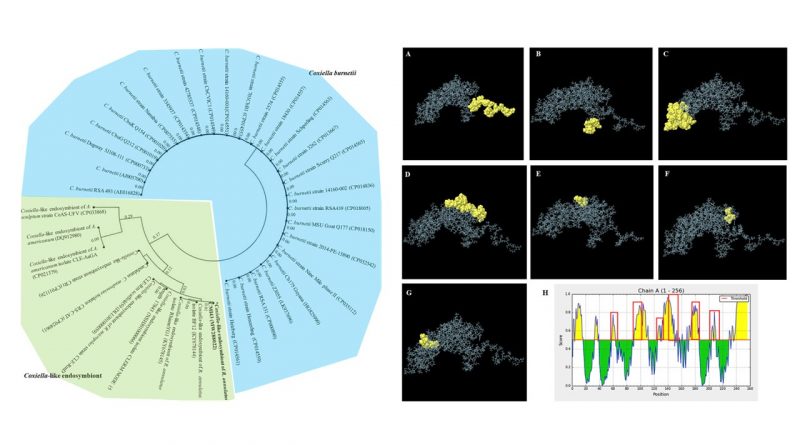Highlight Activities 2021: Partial DnaK protein expression from Coxiella-like endosymbiont of Rhipicephalus annulatus tick
Q fever is one of the most important zoonotic diseases caused by the obligate intracellular bacteria, Coxiella burnetii. This bacterial infection has been frequently reported in both humans and animals, especially ruminants. Ticks are important ectoparasite and serve as reservoir hosts of Coxiella-like endosymbionts (CLEs). In this study, we have attempted to express chaperone-coding genes from CLEs of Rhipicephalus annulatus ticks collected fromcow path. The partial DnaK coding sequence has been amplified and expressed by Escherichia coli. Amino acid sequences have been analyzed by MS-MS spectrometry and the UniProt database. Despites nucleotide sequences indicating high nucleotide variation and diversity, many nucleotide substitutions are synonymous. In addition, amino acid substitutions compensate for the physicochemical properties of the original amino acids. Immune Epitope Database and Analysis Resource (IEDB-AR) was employed to indicate the antigenicity of the partial DnaK protein and predict the epitopes of B-and T-cells. Interestingly, some predicted HLA-A and B alleles of the MHC-I and HLA-DR alleles belonging to MHC-II were similar to T-cell responses to C. burnetii in Q fever patients. Therefore, the partial DnaK protein of CLE from R. annulatuscould be considered a vaccine candidate and immunogenic marker with future prospects.
Reference
Nooroong P, Trinachartvanit W, Baimai V, Anuracpreeda P, Ahantarig A. Partial DnaK protein expression from Coxiella-like endosymbiont of Rhipicephalus annulatus tick. PLoS One 2021; 16: e0249354. doi:10.1371/journal.pone.0249354


